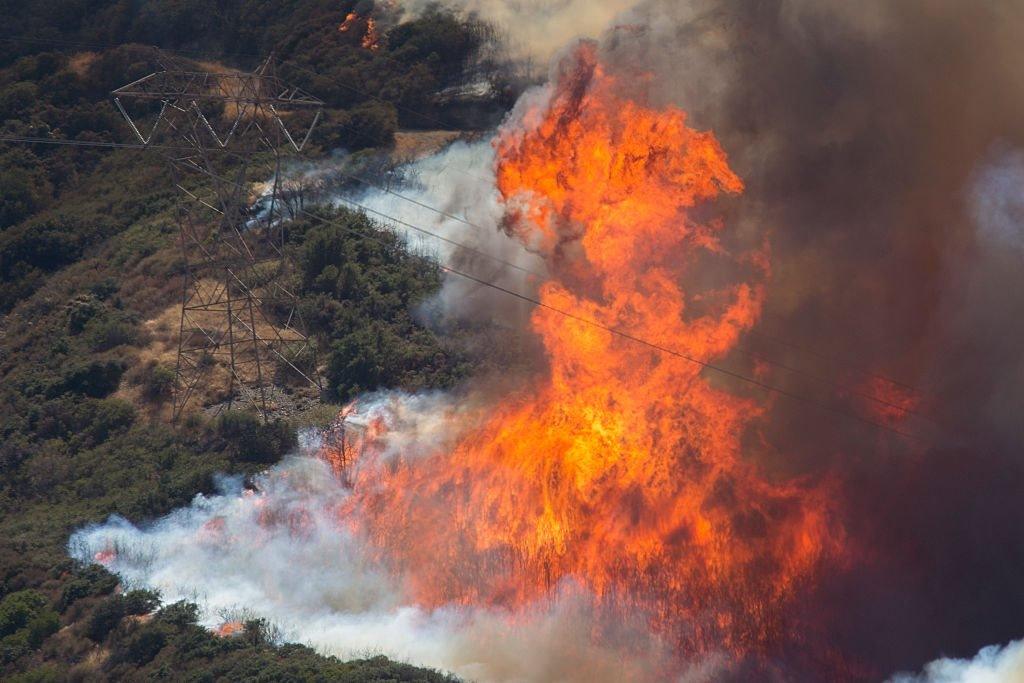California wildfires: What is a firenado?
- Published
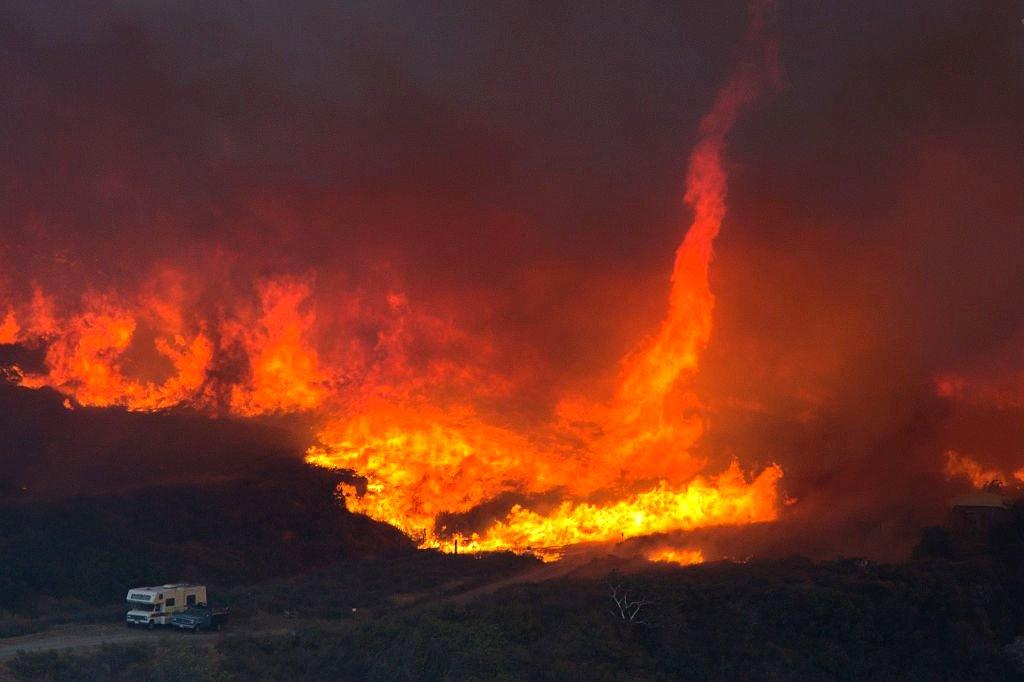
Amidst the devastation of a huge wildfire in the US state of California, photos have emerged of a rare force of nature.
Firenadoes, torrents of wind and flame that burn at extreme temperatures, have been spotted in the hills near San Bernardino, 60 miles (96km) east of Los Angeles.
The whirlwinds form when a fire heats air above it and pulls in cool air at its base, creating a self-sustaining vortex. When large enough, these swirling columns are capable of ripping trees from the ground and pulling roofs off houses.
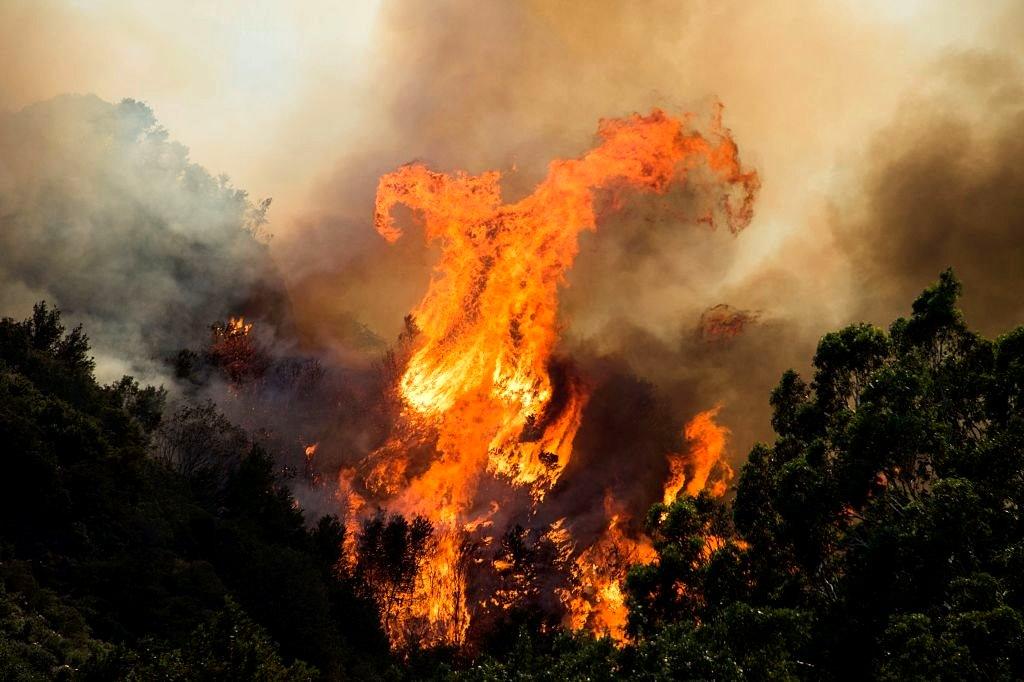
California's inferno currently spans 58 sq mi (150 sq km) in a dry, drought-ridden region of hills. More than 82,000 people have evacuated their homes. Only 22% of the fire has been contained.
Firefighters tend to avoid firenadoes due to their extreme heat and volatility. They instead focus on tackling more stable areas, where the movement of a fire can be safely predicted.
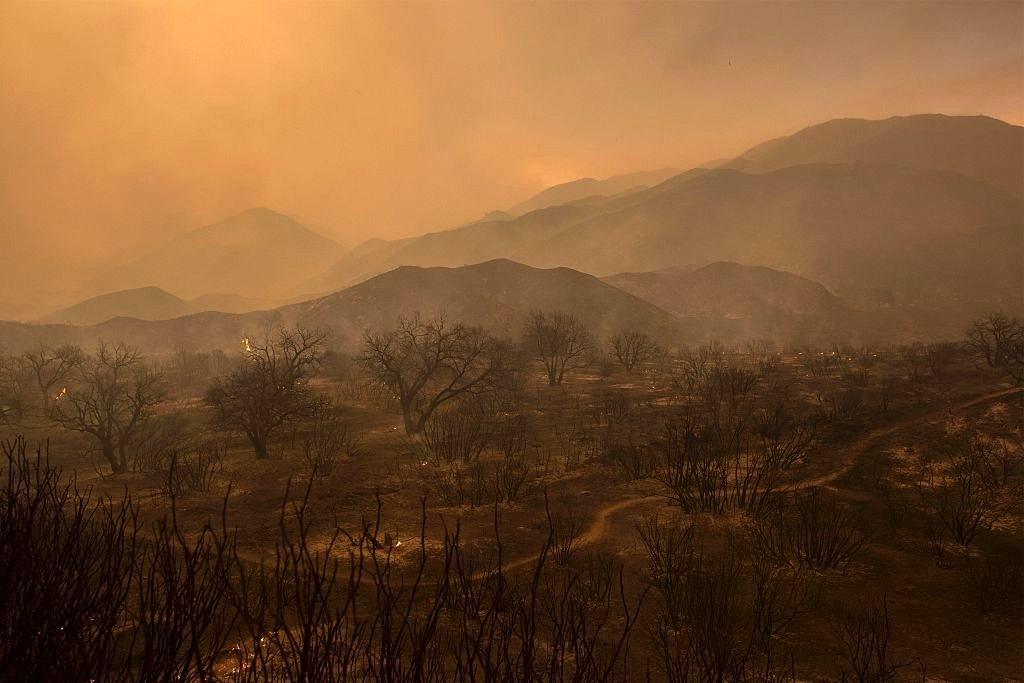
Firenadoes are known to occur around the world, but are most common in the US and Australia. Most are small, sometimes no more than a few feet across.
Those spotted in California this year have been exceptionally large, stretching to as much as 500 ft (152 m) in diameter.
As well as reaching temperatures as high as 800 C (1472 F), they can cause a fire to spread by spewing out embers and hot debris.

So far, the fire has swept over more than 35,000 acres (14,163 hectares).
Thousands of firefighters are tackling the blaze, including seventeen helicopters and 178 fire engines, external. It is not yet known how many buildings or homes have been destroyed.
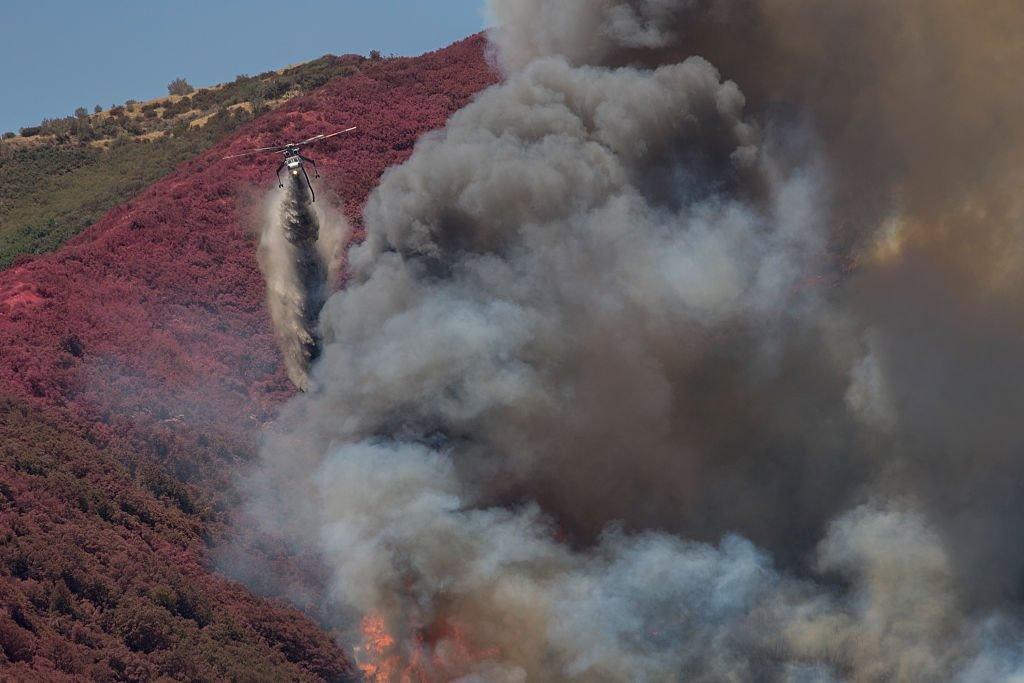
Wind speeds have reached 30mph (48km) in the past few days, fuelling the firenadoes and the overall wildfire.
"You add the wind, the fuel and the lay of the land and they all line up for a disaster," said Michael Wakoski, battalion chief of the San Bernardino County Fire Department in an interview with the Los Angeles Times, external.
"The brush is like stick. They just break off when you walk through them. It's a disaster that has been waiting to happen all year, waiting for a spark."
